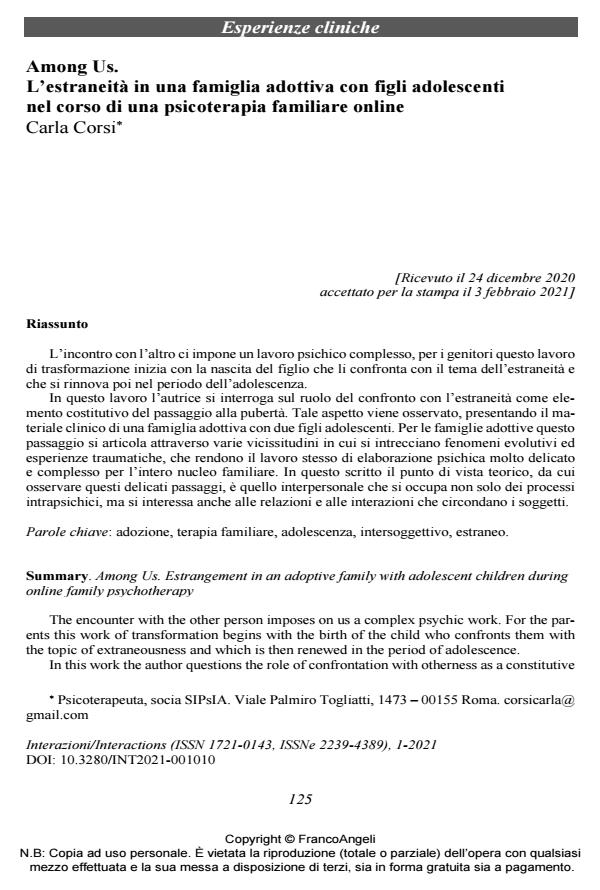Among Us. Estrangement in an adoptive family with adolescent children during online family psychotherapy
Journal title INTERAZIONI
Author/s Carla Corsi
Publishing Year 2021 Issue 2021/1
Language Italian Pages 12 P. 125-136 File size 189 KB
DOI 10.3280/INT2021-001010
DOI is like a bar code for intellectual property: to have more infomation
click here
Below, you can see the article first page
If you want to buy this article in PDF format, you can do it, following the instructions to buy download credits

FrancoAngeli is member of Publishers International Linking Association, Inc (PILA), a not-for-profit association which run the CrossRef service enabling links to and from online scholarly content.
The encounter with the other person imposes on us a complex psychic work. For the par-ents this work of transformation begins with the birth of the child who confronts them with the topic of extraneousness and which is then renewed in the period of adolescence. In this work the author questions the role of confrontation with otherness as a constitutive element of the transition to puberty. This aspect is observed, presenting the clinical material concerning an adoptive family with two teenage children. For adoptive families this passage is articulated through various vicissitudes in which evolutionary phenomena and traumatic expe-riences are intertwined, which make the work itself of psychic elaboration very delicate and complex for the entire family. In this paper the theoretical point of view, from which to ob-serve these delicate passages, is the interpersonal one that deals not only with intrapsychic processes but also with the relationships and interactions that surround the subjects.
Keywords: Adoption, family therapy, adolescence, intersubjective, stranger.
Carla Corsi, Among Us. L’estraneità in una famiglia adottiva con figli adolescenti nel corso di una psicoterapia familiare online in "INTERAZIONI" 1/2021, pp 125-136, DOI: 10.3280/INT2021-001010